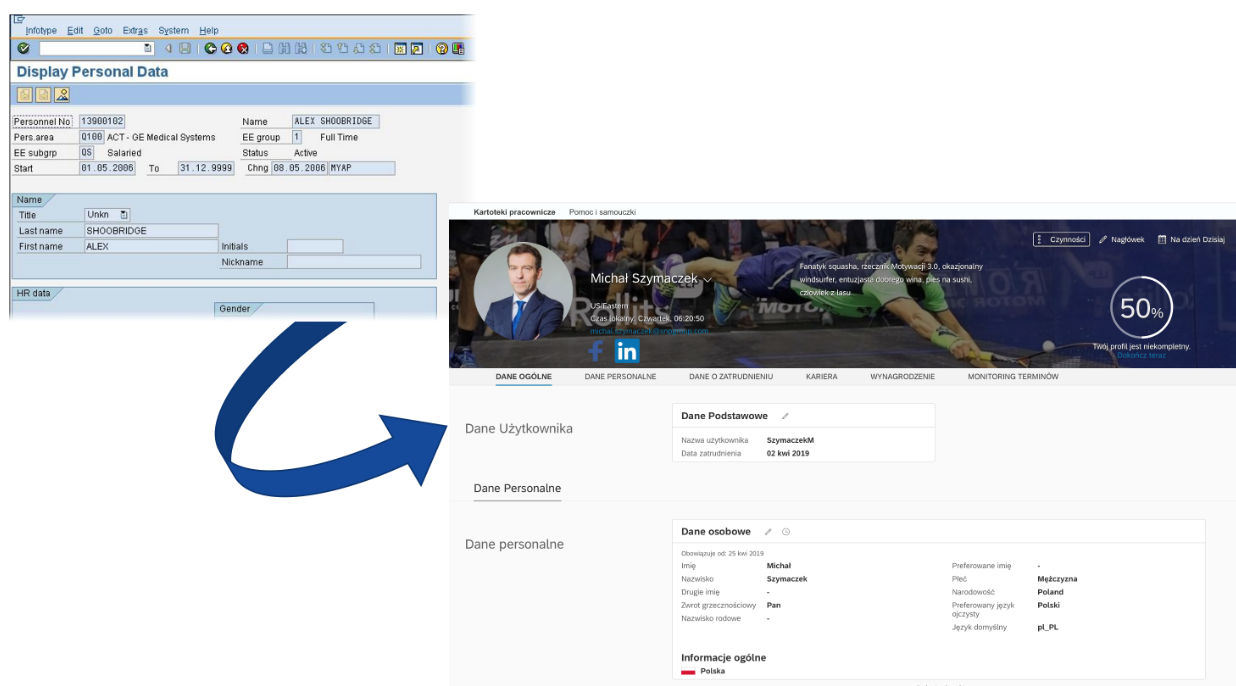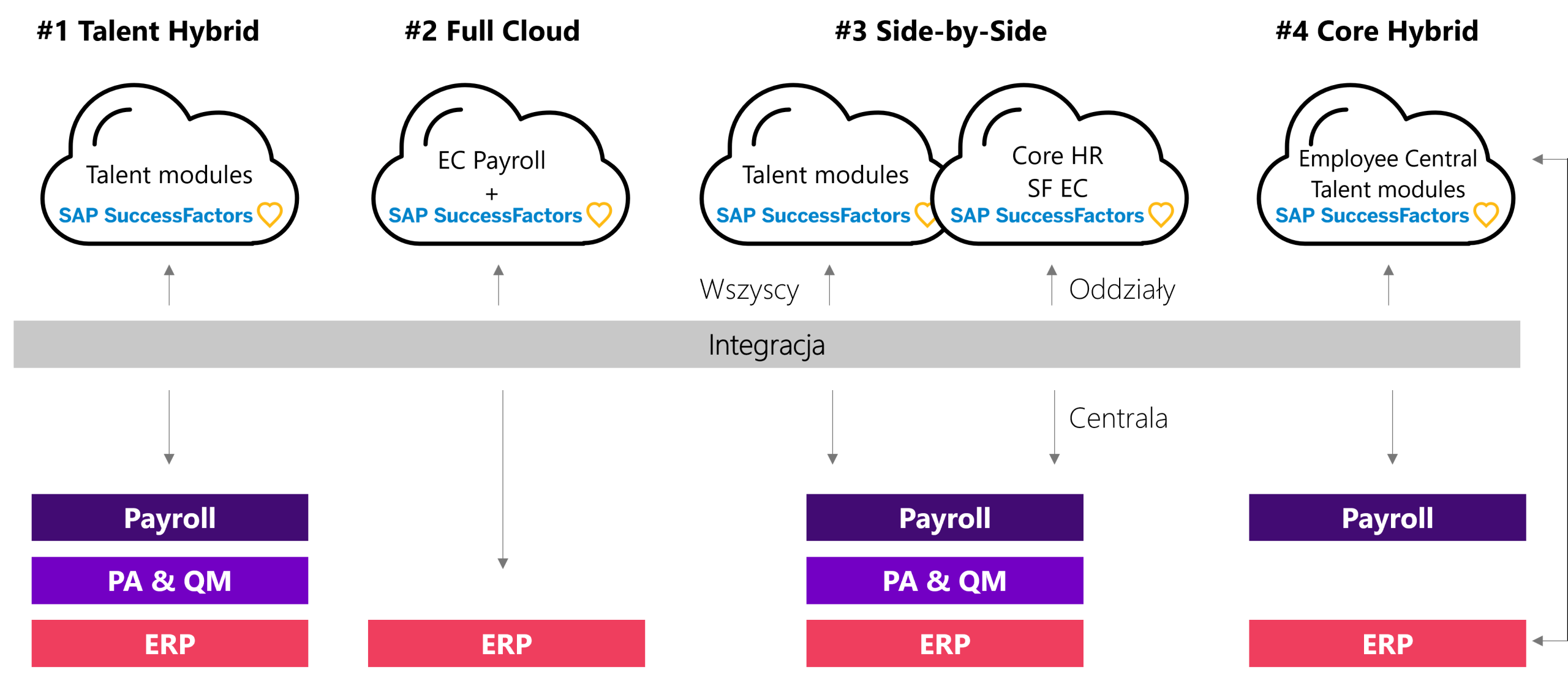It will be easier to understand SAP’s HCM offering if we trace how it has changed over time. The SAP HR system appeared in the product portfolio in 1986. 15 years later, it was complemented by self-service applications (ESS/MSS), E-Learning and E-Recruiting. Until 2011, not much changed apart from the emergence of the SAP NetWeaver technology platform as well as the SAP ERP and SAP Business Suite 7 integrated packages. For HR, these were not revolutions, and it can be said that the current on-premise installations do not differ significantly from those from a dozen or so years ago.
The real breakthrough came in 2011, when SAP acquired SuccessFactors, the second-largest cloud HR solution after salesforce.com, with 6,000 clients and 32 million users in 185 countries. In 2012, the manufacturer announced that they planned to migrate HR to the cloud and that in the future all functionalities, including payroll, would be offered in a subscription model. Companies still had two options to choose from – on-premise (SAP HR) and SAP SuccessFactors.
SAP launched an intensive campaign to encourage its customers (13,000 organizations) to migrate their HR equivalents to the cloud, although “equivalent” is not meant literally here, as SuccessFactors is based on a different philosophy and assumptions.




